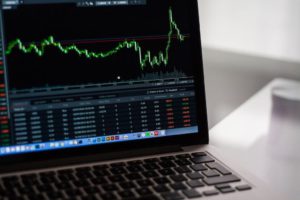Moral Money’s “20 things to watch in 2020” is an interesting piece to which I would add two things: Firstly, there already exists a common set of reporting standards for ESG: UNCTAD’s Global Core Indicators. Secondly, something to add to watch in 2020 is Big Data and AI which provides superior data which I would call ‘ESG 2.0.’ Big Data also provides data on the broader set of nonfinancial risks and opportunities: the Sustainable Development Goals (SDGs) and Impact Investing Measurements.
Let’s take the first. It surprises me that while firms, market participant, some policy makers and other stakeholders are still talking about the need for common standards to use for reporting firm-level nonfinancial ESG data, they are overlooking or unaware of UNCTAD-ISAR’s Global Core Indicators (GCIs). There are close to 100 countries which are members of UNCTAD-ISAR (International Standards of Accounting and Reporting) with many more countries supporting the GCIs independently of the ISAR membership. UNCTAD-ISAR’s GCIs already provide metrics and standards for firm entity-level reporting on their contributions to the SDGs, of which ESG’s are only a subset. The Global Core Indicators are a common set of standards which fulfill all of the quantitative requirements – consistent, comparable, material, universality etc – and also facilitate convergence of financial and non-financial reporting, making them suitable for consolidated reporting and legal entity reporting. UNCTAD’s framework and standards are also consistent with TCFD and can be the implementation tools for TCFD. Moreover, the standards can link firm-level reporting into national statistics and reporting.
Secondly, while having a common set of standards is good, Big Data enhances reported data with ‘alternative data’ using artificial intelligence, machine learning and natural language processing (NLP) to cull through tens of thousands of data and reports in dozens of languages providing ESG and SDG information for thousands of firms. Big Data makes information available on a daily basis for investors, governments and all stakeholders – not just annually when a firm reports unaudited nonfinancial data.
Through these advanced statistical techniques data are made available which one would not get from only using unaudited, self-reported annual firm reports. Moreover, Big Data eliminates self-reporting bias and ‘greenwashing’ and can show which firms are really walking-the-talk. And Bid Data is already helping countries determine which firms are delivering on the SDGs and where capital needs to be redeployed.
Millennials and investors looking for firms ‘doing good’ have moved beyond the narrow focus of ESGs and the definition of doing good as a way of enhancing a firm’s bottom line. They have embraced SDGs as this decade’s true measure of ‘doing good.’ After all, the SDGs are a broader and more meaningful set of criteria on how to measure impact and whether a firm is ‘doing good’ focusing not only on climate but, for example, on life on land and below water; peace and justice; reducing hunger, poverty and inequalities to name but a few. SDGs are this decade’s definition of ‘doing good’ and firms have every opportunity to show what they are doing to deliver on our shared responsibilities by reporting under the GCIs. And, of course, Big Data will be tracking who is really walking-the-talk.
Welcome to a new and exciting decade.








